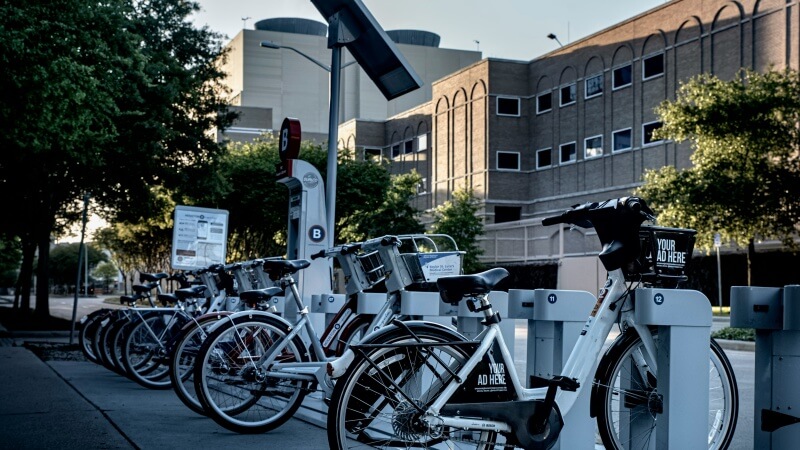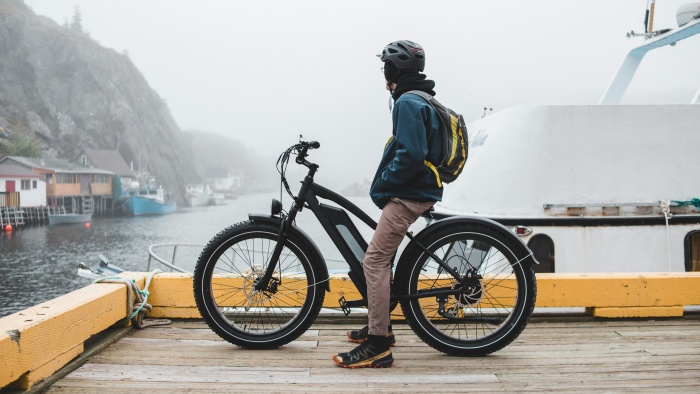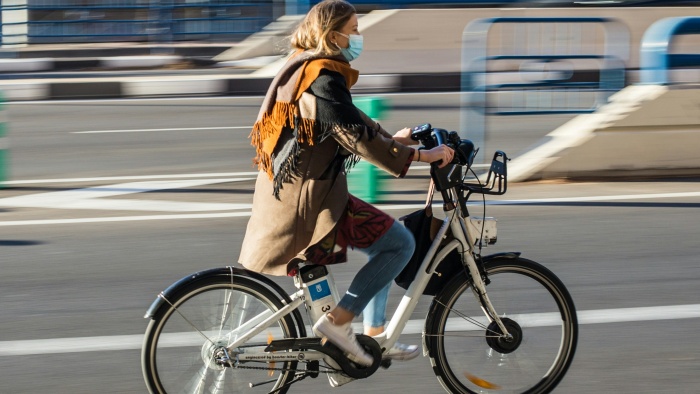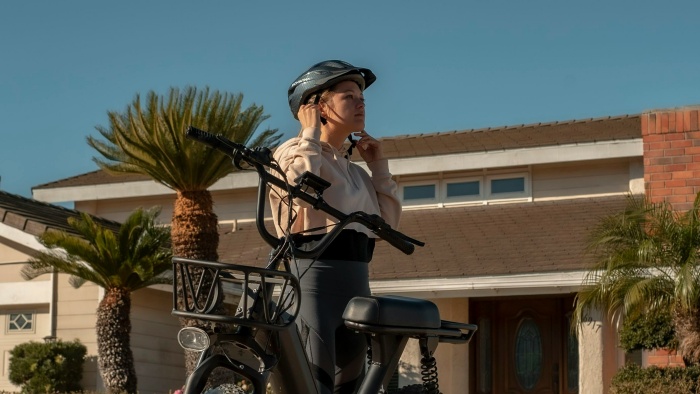Electric Bicycle Classes And Laws In USA

There is no federal mandate governing electric bicycle classes in the US, with this responsibility falling to individual states. Nonetheless, this landscape is evolving, propelled by the advocacy of cycling enthusiasts and groups.
Presently, 36 states have adopted the widely recognized “three-class e-bike system” for regulating e-bikes, which categorizes them based on their motor’s power output, up to a maximum of 750 Watts, into the following classes:
- Class 1
These are e-bikes equipped with a pedal-assist system (PAS) that stops providing motor aid at 20 mph.
- Class 2
These models feature both throttle and PAS, with motor assistance ceasing at 20 mph.
- Class 3
These e-bikes offer a PAS with motor assistance extending up to 28 mph.
- Classless
This category includes any e-bikes that don’t fit within the aforementioned classes, such as those lacking pedals, those whose throttle assists up to 28 mph, and those equipped with motors exceeding 750W power.

To understand the full scope of these classifications and their implications, it’s essential to delve deeper into the specifics of how this system operates.
Is a license required to operate an E-bike?
Across the vast majority of states within the US, e-bikes are classified similarly to traditional bicycles rather than being categorized with motorcycles or mopeds. This classification allows individuals to operate an e-bike without the necessity of possessing a license.
Similar to the regulations surrounding conventional bicycles, most states do not mandate the procurement of insurance or the registration of the e-bike with the state’s department of motor vehicles.
Nevertheless, there are certain exceptions to these rules, which we will explore further in the subsequent section.
What are the classifications and regulations for electric bicycles in the us?
Investigations reveal that 36 states have currently adopted the three-class e-bike system, including Alabama, Arizona, Arkansas, California, Colorado, Connecticut, Delaware, Florida, Georgia, Idaho, Illinois, Indiana, Iowa, Kansas, Louisiana, Maine, Maryland, Michigan, Minnesota, Mississippi, Missouri, Nevada, New Hampshire, New Jersey, New York, North Dakota, Ohio, Oklahoma, South Dakota, Tennessee, Texas, Utah, Vermont, Virginia, Washington, West Virginia, Wisconsin, and Wyoming. As e-bikes gain popularity as a mode of transportation, it is expected that additional states will adopt this classification system.
Leading the charge for uniform e-bike regulations across the US, People for Bikes advocates for a regulatory framework where Class 1 and 2 e-bikes are treated similarly to traditional bicycles, allowing them the same access to paths and areas where regular bikes are permitted, given their comparable speeds.

The organization’s policy document outlines that while Class 1 and 2 e-bikes may enjoy broad access, Class 3 e-bikes, or speed pedelecs, could face restrictions on multi-use paths like boardwalks.
These e-bikes might only be allowed in bike-only lanes or roads shared with motorized vehicles. The policy also suggests possible age requirements and helmet mandates for Class 3 e-bike riders.
Interestingly, the policy recommendations do not advocate for the registration of e-bikes, nor do they suggest that riders should need a license or insurance.
However, even in states that have embraced these guidelines, obtaining third-party liability insurance could be wise to protect against potential legal costs arising from accidents.
What are the classifications of electric bicycles and their regulations?
To navigate the distinctions within the three-class system of electric bicycles, it’s essential to grasp the mechanics behind e-bike operation.
Class 1 E-Bikes
Class 1 e-bikes are equipped with a motor positioned either on a wheel (hub motor) or near the crank (mid-drive motor). Sensors around the crank detect pedaling activity, signaling a computer (the controller) to activate the motor through a pedal assist system (PAS).
Class 2 E-Bikes
E-bikes in Class 2 feature both a PAS and a throttle mechanism, which can be a button, lever, or half-twist grip similar to those found on motorcycles. Activating the throttle allows the rider to cease pedaling while the controller commands the motor to generate power.
Class 3 E-Bikes
Class 3 e-bikes, which are solely PAS-operated, include a speed limiter that disengages the motor at 28 mph, unlike the 10 mph limit for Class 1 e-bikes. Throttles are absent on these e-bikes, and they are required to have a speedometer, unlike their counterparts.
Out of Class E-Bikes
Per the National Conference of State Legislatures, any device falling outside these categories is not recognized as a low-speed electric bicycle and thus is not regulated as a bicycle.
Purchasing an e-bike not covered by these classifications necessitates a review of local laws to avoid the need for moped registration or compliance with other standards. Some areas impose speed restrictions on throttle-powered bikes before they are disqualified as e-bikes.
M-Class Bikes
There exists electric motorcycles that are devoid of pedals and are distinguishable from bicycles. These motorcycles, capable of exceeding 100 mph, are regulated under the same laws as traditional motorcycles, including requirements for registration, taxation, licensing, and insurance.
How do states without the three-class system regulate e-bikes?
In the evolving landscape of e-bike regulation within the US, states exhibit a diverse approach to managing these vehicles as their popularity surges.
To avoid unexpected fines or legal issues due to unfamiliarity with local laws, verifying the specific e-bike regulations in your state is crucial. Below is a detailed examination of the regulatory environment across various states:
Alaska
E-bikes are designated as “motor-driven cycles” in Alaska, necessitating a license for operation, with the option for teens to obtain an instruction permit at age 14. While there’s no requirement for registration, insurance, or helmet usage, e-bikes are prohibited on public sidewalks and bike trails.
Hawaii
E-bikes enjoy the same privileges as traditional bicycles, including access to bike paths. However, registration is mandatory ($30) for adults at designated government locations. Other restrictions are not imposed.
Kentucky
E-bike riders in Kentucky are subject to the same road rules as regular cyclists, without any specific e-bike regulations or limitations.
Massachusetts
Defined as “motorized bicycles” for models not exceeding 25 mph (akin to Class 3 bikes), Massachusetts mandates licensing and registration for e-bike riders, excluding insurance requirements. The law enforces helmet usage and sets the minimum age at 16, barring e-bikes from sidewalks and bike paths.
Montana
Montana categorizes an e-bike as an “electrically assisted bicycle” with a top speed of 20 mph (Class 2 bikes), imposing no further regulations. There are no stipulations regarding licensing, registration, insurance, age, or helmet usage, and e-bikes are permitted on bike paths and sidewalks.
Nebraska
E-bikes are recognized as “electric assisted bicycles” if they have a motor under 750 Watts and a maximum speed of 20 mph with fully operational pedals, with no restrictions on age or helmet use, and allowed access to bike paths and sidewalks.
New Mexico
Here, e-bikes are classified as “mopeds,” requiring riders to be 15 or older, possess a license/permit, register the e-bike, and have insurance. Restrictions apply to sidewalk use and possibly certain paths or trails.
North Carolina
Defined as “electric assisted bicycles,” e-bikes in North Carolina must feature pedals, an electric motor under 750 Watts, and a maximum speed of 20 mph. The minimum rider age is 16, without requirements for helmets, registration, insurance, or a license. E-bikes are allowed wherever regular bicycles can go.
Oregon
In Oregon, e-bikes fall under the “electric assisted bicycles” category, treated similarly to bicycles but with a motor output cap of 1,000 Watts. They are allowed on bike paths (but not sidewalks), with a minimum rider age of 16, and no demands for registration, insurance, helmets, or licenses.
Pennsylvania
E-bikes, or “pedalcycles with electric assist,” must have a motor under 750 Watts, pedals, a maximum speed of 20 mph on level ground, and weigh less than 100 pounds. Riders must be at least 16 years old, with no other specific requirements.
Rhode Island
E-bikes, or “electric motorized bicycles,” with a power output of less than 1,491w (equivalent to 2 horsepower) and a top speed of 25 mph, don’t need registration but must adhere to road laws applicable to “vehicles,” excluding “motor vehicles.” Age, documentation, and helmet requirements are not explicitly mentioned.
South Carolina
E-bikes with a motor power output under 750 watts are not classified as “mopeds” in South Carolina, freeing them from licensing or registration requirements. State-level restrictions or regulations regarding age, helmets, or bike path usage are absent, though local laws may vary.
Washington, D.C.
Defined as “motorized bicycles,” e-bikes in D.C. require operable pedals and a combined human and motor power-assisted maximum speed of 20 mph. The minimum rider age is 16, with no obligations for registration or insurance, and helmets are not mandatory.
What are the regulations on helmet, age, and other aspects for e-bike riders?
Despite a general agreement on electric bike definitions and classes across most US states, individual states exercise distinct regulatory approaches. Here’s a breakdown of key regulations you might encounter.
Head Protection
In the US, 25 states currently do not mandate head protection for e-bike riders. Conversely, helmets are required in 22 states and Washington DC, with variations based on e-bike classes and rider age.

For Class 3 e-bikes, helmet use is obligatory for riders of all ages in eight states: California, Georgia, Louisiana, New York, Ohio, Tennessee, Virginia, and West Virginia. Additionally, eight other states enforce helmet laws for riders under specific age thresholds, typically under 21 or 18.
In five states, helmets are a must for younger riders of all e-bike classes. Connecticut stands out by requiring all e-bike riders and passengers to wear helmets, while New York and Florida impose this rule for those under 14 and 16, respectively. Delaware extends this requirement to anyone under 18.
Multi-Use paths
Class 1 and 2 e-bikes should be treated the same as traditional bicycles regarding access to paths. This perspective is reflected in California’s policy, allowing Class 1 and 2 e-bikes on state park trails, a privilege not extended to Class 3 e-bikes.
However, Washington State’s regulations permit Class 3 e-bikes on state park paths where traditional bikes are allowed.
Because regulations vary by location, it’s crucial to verify local laws before embarking on an e-bike adventure to ensure compliance.
National parks note
Since July 2022, e-bike riders have been welcomed in National Parks, recognizing the three-class system. This change grants park superintendents the authority to decide the permissible classes of e-bikes within their parks.
While many parks allow Class 1 and 2 e-bikes where traditional bikes can go, restrictions often apply to Class 3 e-bikes due to their higher speeds.
Before visiting a national park, checking its website for specific e-bike regulations is advisable.
The challenge of diverse E-Bike regulations
Navigating the patchwork of e-bike regulations across states can be challenging for riders. This contrasts with the European Union, where uniform regulations apply across member states, setting a speed limit for e-bikes and banning throttles, providing clarity and consistency for users.
In the US, a rider from Washington State may face restrictions in California or additional requirements in Alaska, illustrating the complexity and inconsistency of e-bike laws.
Staying informed on regulatory changes
The adoption of the class system by more states offers a semblance of uniformity and predictability for e-bike riders, hinting at a future where regulations might be harmonized across the nation.
This potential shift, coupled with recent federal recognition of the class system by the National Parks Service, underscores the importance of staying updated on regulatory changes and supporting advocacy efforts for broader acceptance of e-bike class systems.
Conclusion
The evolving landscape of electric bicycle classes and regulations in the United States underscores the importance of staying informed and engaged with local laws.
With 36 states adopting the three-class e-bike system, it’s clear that a consensus is emerging on how to categorize and regulate these versatile modes of transportation.
However, variations in helmet, age, and path access regulations across states highlight the complexity of navigating e-bike usage from one jurisdiction to another.
As electric bicycles continue to gain popularity, the need for unified, clear guidelines becomes increasingly apparent, not just for the convenience of riders, but also for the safety and sustainability of our communities.
The ongoing efforts by advocacy groups and state legislatures to refine and standardize electric bicycle classes and laws are a promising step toward achieving this goal, ensuring that e-bikes remain a viable and enjoyable option for riders everywhere.
FAQs
Can electric bicycles be used on highways?
Electric bicycles are generally not allowed on highways, interstates, or major roads where traditional bicycles are prohibited. However, this can vary by state and local jurisdiction, so it’s essential to check specific rules in your area.
Are there any federal laws concerning electric bicycles?
While there is no comprehensive federal law governing electric bicycles, the Consumer Product Safety Commission (CPSC) has regulations that define electric bicycles as consumer products. These regulations mainly focus on manufacturing and safety standards rather than rider regulations, which are left to states.
Do I need to wear reflective gear while riding an electric bicycle at night?
Many states require bicycles and electric bicycles to be equipped with reflective materials and lights when ridden at night. Specific requirements, such as the color and placement of these lights and reflective materials, can vary by state.
Is it legal to modify an electric bicycle to increase its speed or power?
Modifying an electric bicycle to increase its speed or power may reclassify it under state law, potentially subjecting it to different regulations, such as those applicable to mopeds or motorcycles. Additionally, modifications could void warranties and potentially violate safety standards.
Can children ride electric bicycles?
Age restrictions for electric bicycle riders vary by state. While some states have no minimum age requirements, others may restrict the use of certain classes of electric bicycles to individuals over a specified age. Always check local laws to determine age requirements and whether adult supervision is required for younger riders.

